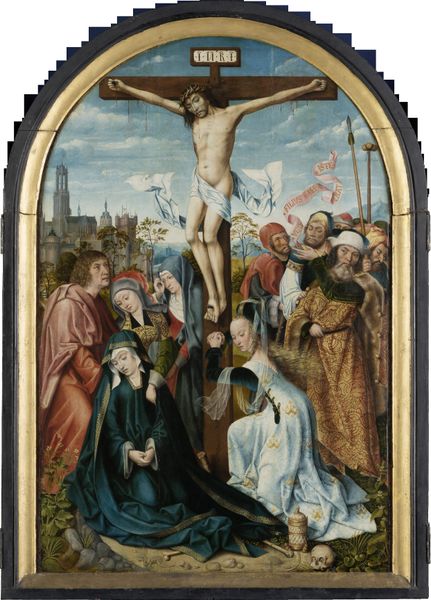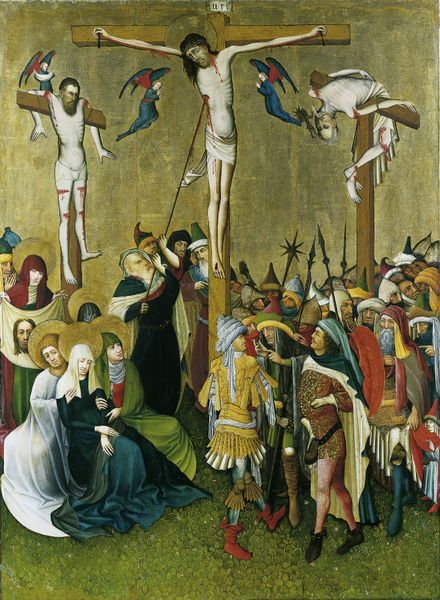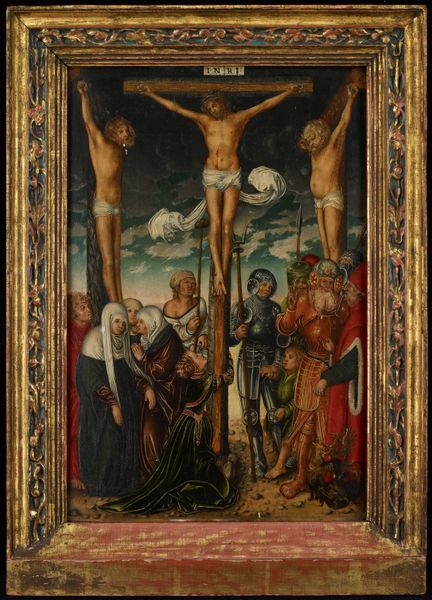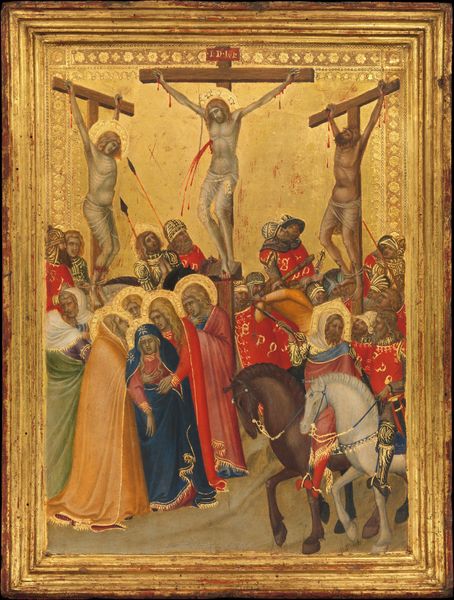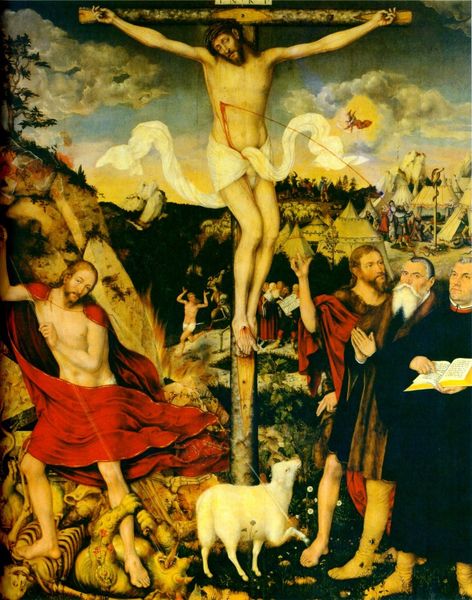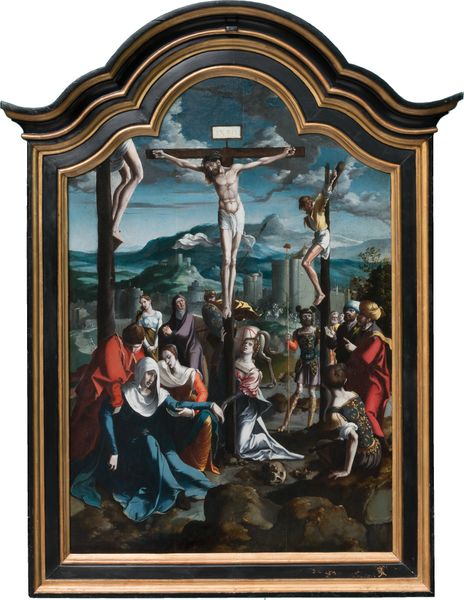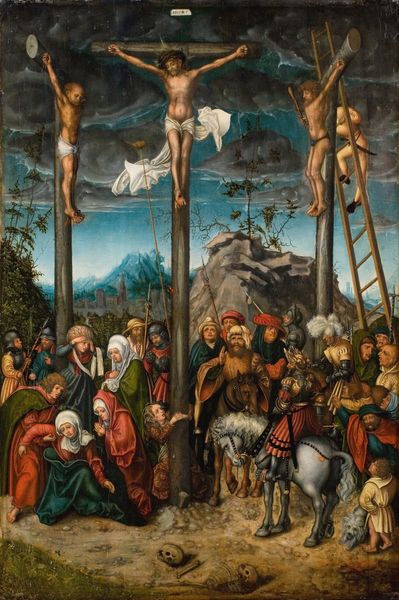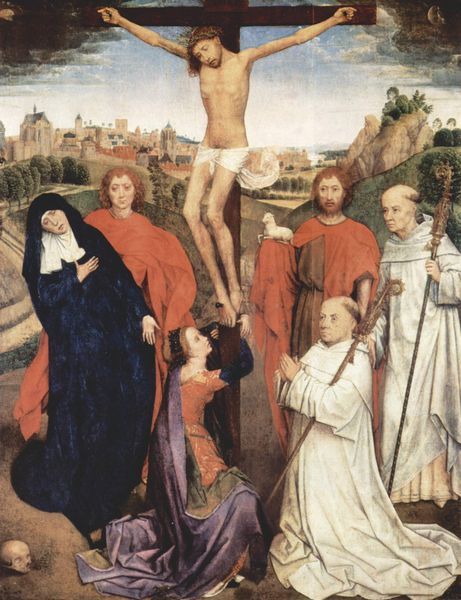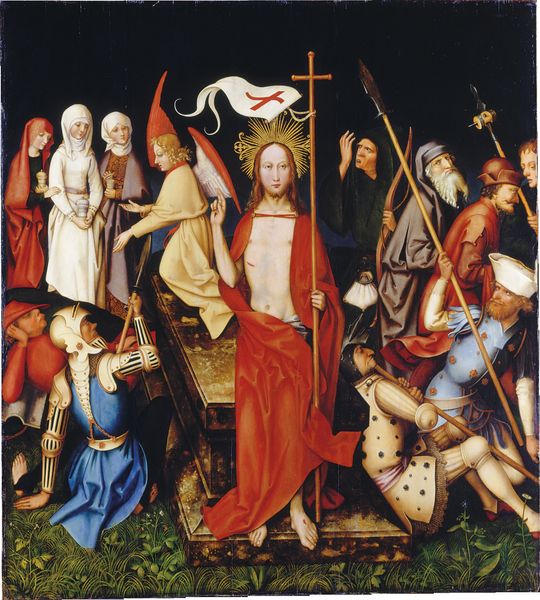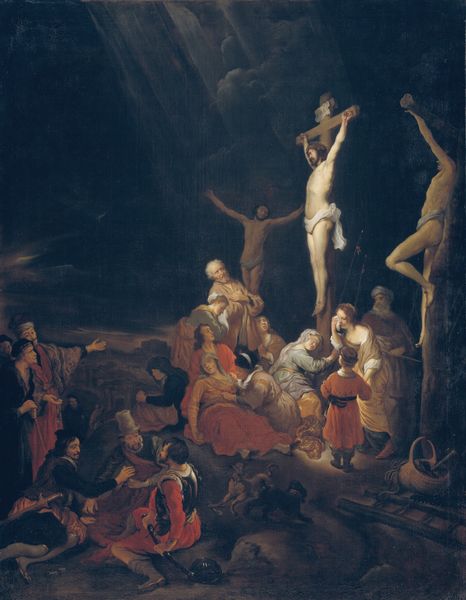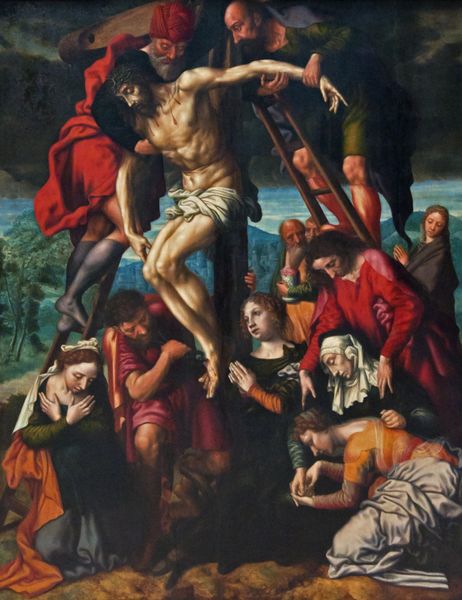
painting, oil-paint, wood
#
portrait
#
narrative-art
#
painting
#
oil-paint
#
landscape
#
figuration
#
oil painting
#
wood
#
history-painting
#
early-renaissance
Dimensions: 101 cm (height) x 70.5 cm (width) (Netto)
Editor: This is "Calvary," an oil painting on wood created between 1508 and 1512 by Jan de Beer. The emotion radiating from the women at the foot of the cross is overwhelming. How do we unpack the narratives of power, suffering, and salvation interwoven in this painting? Curator: Absolutely. Considering the painting through a lens of power dynamics reveals a complex intersection of religious dogma and social control. What specific elements in the composition do you think highlight those power dynamics most effectively? Editor: I think the scale of the figures is interesting, some are prominent while other secondary ones are distant in the composition; Also, the women at the base seem like the emotional focal point. But does this focus somehow disempower them even further, framing them primarily as figures of sorrow rather than action? Curator: That's a crucial question. Early Renaissance art often presented women in prescribed roles, and "Calvary" is no exception. How do you interpret the male figures around Christ – the soldiers, the other crucified men – in relation to this emotional tableau of women? Are they agents of power, or simply executors of a predetermined fate? Editor: The soldiers seem detached, almost clinical in their duty, suggesting perhaps the banality of evil or maybe that they don’t have options either? Curator: Exactly. And that connects directly to broader themes of systemic injustice and oppression, doesn’t it? Think about the sociopolitical climate in which this work was created. Who benefited from this spectacle of suffering? Who was silenced? Editor: Considering this, it transforms my view of the painting from a purely religious scene to a depiction of a society grappling with issues of control and compliance. Curator: Precisely! Seeing the "Calvary" as more than just a religious scene invites us to interrogate the cultural forces at play. It encourages us to think critically about whose stories are told, and whose are omitted, when representing moments of profound social and political tension.
Comments
No comments
Be the first to comment and join the conversation on the ultimate creative platform.
